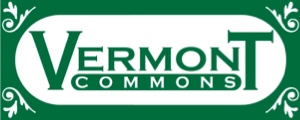The Monthly VCCA meeting was Monday, March 14th at 7:00 PM at Café Ginger, located at 1952 West Gray Street in the shopping center near the intersection with Driscoll.
Here’s the recap:
Recognized new attendees.
Ed Green gave a treasurer’s report in place of Robin Greene. No details on the amounts in or out. Mention was made that Robin was going to start posting the report on the VCCA website.
March coffee was at Patricia Dajani. Residents from VCCA & Park Civic attended.
The neighborhood picnic date was announced to be held on April 30.
An announcement was made about the need for volunteers for the VCCA web crew, assisting with speakers, and advertising.
The Guest speaker was Russ Kane introduced by Jim Skogsberg.
The speaker at the March VCCA meeting discussed The Texas Wine Legacy and Where to Find It. Today Texas has one of the oldest continually-running wine legacies on the North American continent going back over a century before the establishment of the well-known wine regions of California. In the past 40 years, the recent evolution of Texas culture into a respectable modern wine region has shown to be no small task, considering that California has been at it for more than a hundred years and European regions have worked for centuries in their wine-making efforts. Successful Texas wineries have been required to learn about the adaptability of grapevines to our new locale, with different soil and weather conditions, while also expanding knowledge of new viticultural practices to handle the plethora of local diseases that can afflict grapevines. Luckily, Texas has a long farming legacy, a deep-seated pioneering spirit, and tradition of agricultural grit and determination.
This presentation described the “genesis moment” when the basis of Texas wine was created by similar forces to those that established the vineyard terroirs of Europe. It also covered
- the wine culture brought to Texas by Spanish missionaries and European immigrant farmers from the 1600 to early 1900s only to be squashed by Prohibition, and
- the Texas winegrowing renaissance since the 1970s that initially focused on efforts to use the same grape varieties common in northern France and California – Chardonnay, Pinot Noir, Cabernet Sauvignon, and Merlot.
With the exception of some noteworthy successes, it would take Texas another 20 years to ultimately realize that it was not Napa or Bordeaux, and sure as heck was not Burgundy. They found that Texas is something more like wine regions in Mediterranean climes such as Spain, southern France, and Italy. The presentation included a discussion of the major wine regions of Texas and the grape varieties that are now winning top-rated awards nationally and internationally, and “tricks” to reading Texas wine labels to identify Texas’s best wines.
The meeting was adjourned was 8:15pm.

